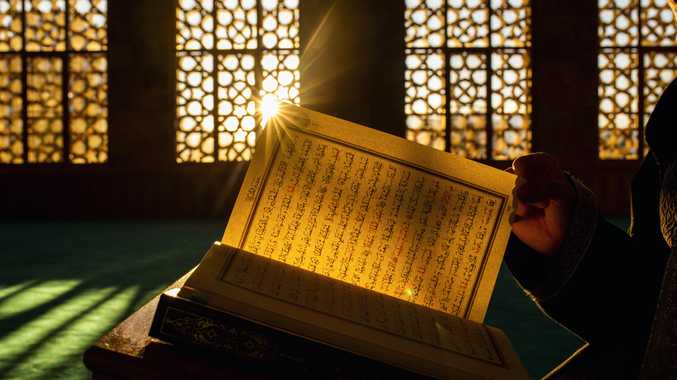Perri Cutten: A Timeless Legacy in Fashion
Remembering Perri Cutten: A trailblazing Australian fashion designer whose timeless elegance and...

 Search...
Search...

Every culture and religion has their own unique way of burying their loved ones when they pass. In most cases, people turn to a funeral home or crematorium to take care of the body. In the Islamic tradition, the process is far more complex, ceremonial and fascinating.
There are primarily two sects within Islam (Shi'a and Sunni) that hold different views on a number of religious matters. For the most part, however, Muslims commonly believe that the good deeds one does in life will yield entry into Paradise on the Day of Judgment, also called the Last Day, when the world will be destroyed. Many Muslims believe that until the Last Day, the dead will remain in their tombs, and those heading for Paradise will experience peace while those heading for Hell will experience suffering.
When a Muslim is approaching death, family members and very close friends are usually always present. They would offer the dying person hope and kindness, and encourage the dying person to say the "shahada," confirming that there is no God but Allah. As soon as death has occurred, those present would then say, "Inna lillahi wa inna ilayhi raji'un" ("Verily we belong to Allah, and truly to Him shall we return"). The deceased's eyes and lower jaw are then closed, and the body is covered with a clean sheet. They then proceed to make "dua'" (supplication) to Allah to forgive the sins of the deceased.
According to Islamic law ("shariah"), the body should be buried as soon as possible from the time of death, which means that funeral planning and preparations begin immediately. A local Islamic community organisation is contacted immediately, and they will begin to help make arrangements for the funeral service and burial, assist the family in identifying an appropriate funeral director and coordinate with the funeral home.
In most cases, when a person of the Islamic faith passes, family members often help wash and bury their bodies within 24 hours. The first step is gathering the materials. Soap, gloves, a comb, a bucket and yards of white cotton cloth is required to prep the body. There are usually two or three other helpers of the same gender, unless it's a spouse. The body is hosed down thoroughly, washing away any impurities of the body. The washing is repeated three times. In some cultures, if the deceased is a woman, the hair is braided into three braids. It is said that Prophet Muhammad taught that a woman's hair should be made into three braids for simplicity in burial. During the last wash, camphor is added in the water - a white, waxy substance in the shape of small cubes that keeps the body soft. After the final wash, the deceased is dried with a clean towel, dressed and if she is a woman, her head will be veiled and hands are laid across the chest as they would be during prayer. Finally, the largest piece of cloth is wrapped tightly around the body.
Muslims try to avoid embalming their dead so that the body naturally decomposes into the earth. Routine autopsies are not acceptable in Islam as they are seen as a desecration of the body. In most cases, the family of the deceased may refuse to have a routine autopsy performed. Cremation is also strictly forbidden for Muslims. When a Muslim dies, the body is buried as soon as possible after death, therefore there is no viewing before the funeral.
The funeral service usually begins with Salat al-Janazah (funeral prayers) which are performed by all members of the community. Though the prayers are recited at the mosque, they are not recited inside the mosque itself; instead, they are performed in a prayer room or study room, or in the mosque's courtyard. Those praying face the "qiblah" (toward Mecca) and form at least three lines, with the male most closely related to the person who died in the first line, followed by men, then children, then women.
After Salat al-Janazah has been recited, the body is then transported to the cemetery for burial. Traditionally, only men are allowed to be present at the burial, though in some communities all mourners, including women, will be allowed at the gravesite. The grave is dug perpendicular to the qiblah, and the body is then placed in the grave on its right side, facing the qiblah. Those placing the body into the grave would then recite the line "Bismilllah wa ala millati rasulilllah" ("In the name of Allah and in the faith of the Messenger of Allah"). Once the body is in the grave, a layer of wood or stones is placed on top of the body to prevent direct contact between the body and the soil that will fill the grave. Then, each mourner present will place three handfuls of soil into the grave. Once the grave has been filled, a small stone or marker may be placed at the grave so that it is recognisable. However, traditionally, it is prohibited to erect a large monument on the grave or decorate the grave in an elaborate way.
After the funeral and burial, the immediate family will gather and receive visitors. It is customary for the community to provide food for the family for the first few days of the mourning period (usually three days). Generally, the mourning period lasts 40 days, but depending on the degree of devoutness of the family, the mourning period may be much shorter.
Widows are expected to observe a longer mourning period, generally of four months and ten days. During this time, widows are prohibited from interacting with men whom they could potentially marry ("na-mahram"). However, this rule may be overlooked in cases of emergency, such as when the widow must see a doctor.
It is acceptable in Islam to express grief over a death. Crying and weeping at the time of death, at the funeral, and at the burial are all acceptable forms of expression. However, wailing and shrieking, tearing of clothing and breaking of objects, and expressing a lack of faith in Allah are all prohibited.
In general, though the Islamic faith and customary burial traditions are vastly different to other religions and traditions. However, it is clear that we are also candidly similar when it comes to grieving and saying goodbye to a loved one. In essence, mourning and grieving is and always will be a human emotion that we all display at the loss of a loved one.
By Aminah Tejan
Sources: